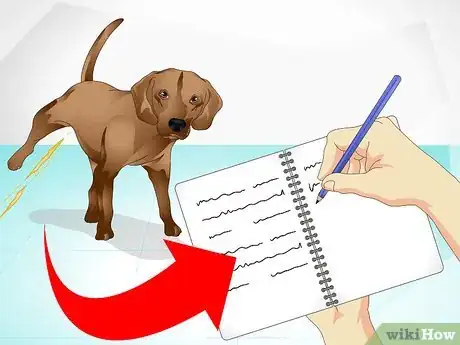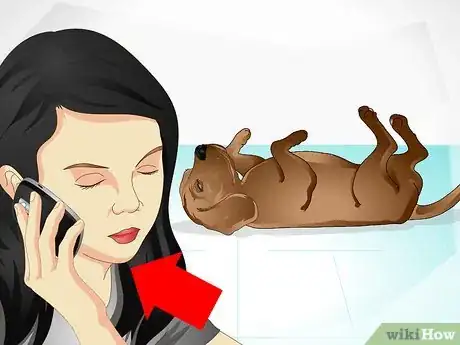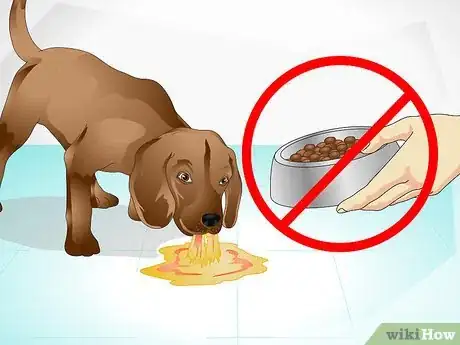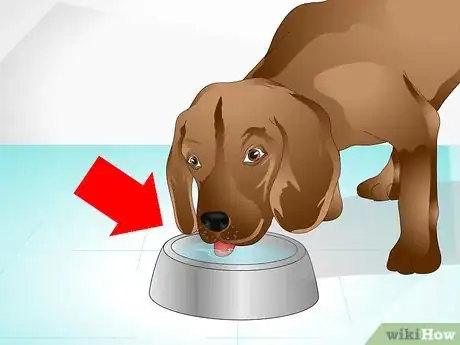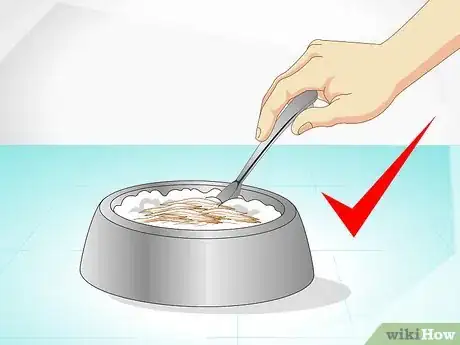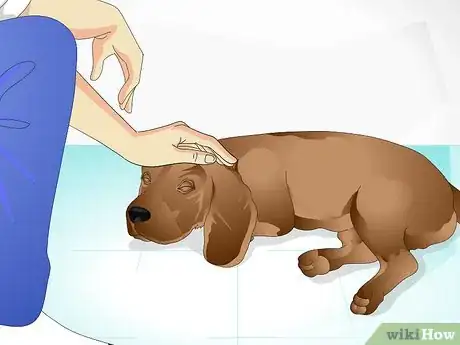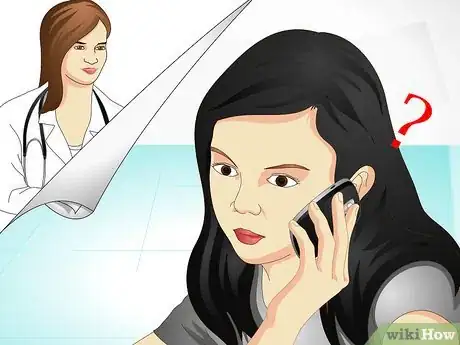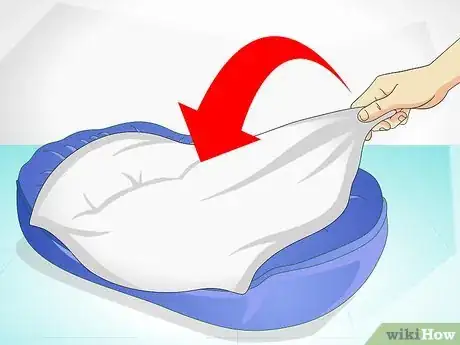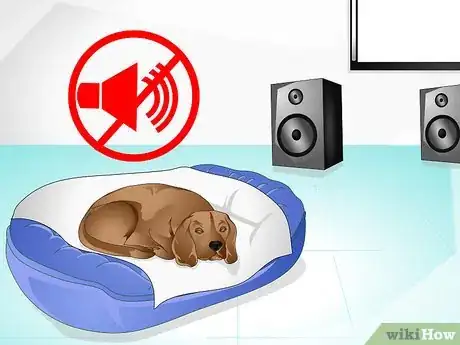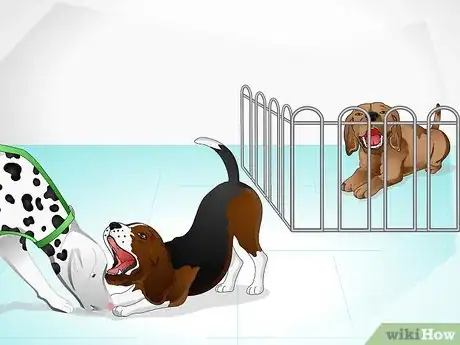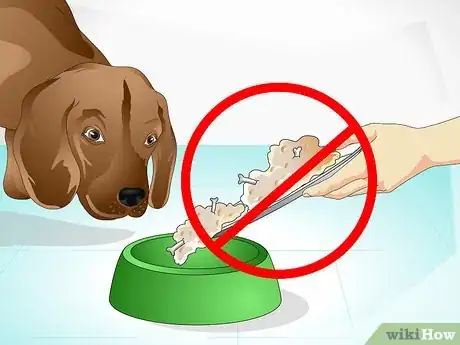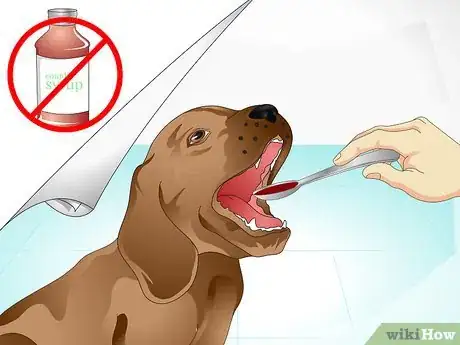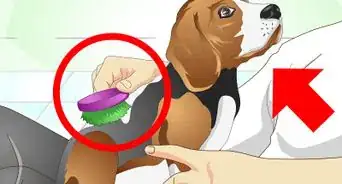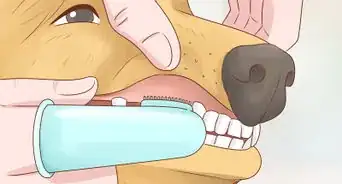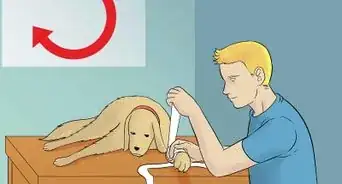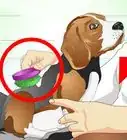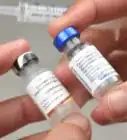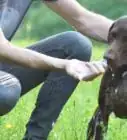This article was co-authored by Shawn Riley. Shawn Riley is a Canine Trainer & Behaviorist based in Tualatin, Oregon. With over 40 years of experience, Shawn trains people to properly establish and maintain leadership roles with their canine companions. Shawn has trained with several acclaimed canine experts and refined The Dog Way training methods through experience and observation of dogs' natural interactions within their groups. Shawn has appeared on several local TV shows and was recruited by National Geographic as the on-set Behavioral Advisor for a national video series called “My Dog Ate What?”
wikiHow marks an article as reader-approved once it receives enough positive feedback. This article has 12 testimonials from our readers, earning it our reader-approved status.
This article has been viewed 344,503 times.
It is no fun seeing your best friend feeling poorly. He relies on you—his owner—to be his advocate when he is ill. Your first step is to recognize when your dog is sick, and secondly, to recognize the severity of the illness. Some illnesses can be treated at home under your careful observation, while other illnesses require the prompt attention of a veterinarian. Whenever you are in doubt, don’t hesitate to call your veterinarian for advice. Sometimes it can be a matter of life or death.
Steps
Recognizing Symptoms of Illness
-
1Monitor your dog's daily activity. Keep a notebook of when your dog relieves himself, when his symptoms occur, when he eats and drinks, and so on. This helps to establish a pattern to the symptoms. It can also be a very useful tool for the veterinarian to diagnose your dog’s illness. [1]
- If your dog is mildly sick (not eating the best for a day, restless, vomiting once or twice, a bout of diarrhea) you can carefully observe your dog at home and phone your vet for advice.
-
2Seek prompt veterinary attention with certain symptoms. There are several severe symptoms that require immediate medical attention.[2] Never wait on these symptoms and call your vet right away:
- Unconsciousness
- Profuse bleeding
- Known ingestion of a toxic substance
- Unrelenting vomiting and diarrhea
- Broken bones
- Breathing difficulties
- Seizures that don’t stop within one minute
- Unable to urinate or not producing urine
- New or recurring symptoms in a dog with a medical condition (diabetes, Addison’s disease, etc.)
- Large swellings around the face, eyes or throat
Advertisement -
3Get advice from your vet on less severe symptoms. Some symptoms of illness can be uncomfortable for dog and may indicate conditions that need to be treated. Call your vet to get advice on treating the following symptoms:
- Isolated seizure that lasts less than one minute
- Occasional vomiting and diarrhea lasting longer than one day
- Fever
- Lethargy lasting longer than one day
- Not eating for more than one day
- Difficulty defecating
- Limping or acting painful
- Excessive drinking
- Swelling that comes on gradually
- Lumps or bumps that suddenly appear or current ones that grow
- Any other odd symptom or behavior (shivering or whimpering)
Treating Illnesses at Home
-
1Withhold food if your dog is vomiting or has diarrhea. For puppies and dogs older than 6 months who have previously been healthy, you can withhold all food for up to 24 hours if the primary symptoms are vomiting or diarrhea.
- This also includes treats and rawhides.
-
2Make sure your dog has access to water. Never withhold water from a sick dog, unless he vomits it up. If this happens, contact your veterinarian for advice.
-
3Introduce a bland diet for 1-2 days. After you withhold food for 24 hours, and your dog is behaving more normally, you can gradually introduce a bland diet for 1-2 days. A bland diet for a dog includes one part easily digested protein and 2 parts an easily digested starch.
- Typical protein sources include cottage cheese or chicken (no skin or fat) or boiled hamburger.
- A good starch is plain cooked white rice.[3]
- Feed your dog one cup daily (split into 4 servings 6 hours apart) per 10 pounds of weight.
-
4Limit your dog’s exercise and play time. Make sure your dog gets plenty of rest by restricting how much exercise and play time he gets. Take him out on a leash to relieve himself, but don’t let him play while he feels poorly. This is especially important if he is limping.
-
5Monitor your dog’s stool and urine output. Pay attention to how much your dog is defecating and urinating while he is ill. If you normally let him outside by himself, use a leash while he’s ill so that you can watch how much he urinates or defecates.
- Do not punish your dog if it has an accident inside the house—stool, urine or vomiting. They cannot help it if they are sick and may hide from you if they are punished.
-
6Monitor your dog’s symptoms closely. Make sure you keep a very close eye on your dog, in case the symptoms get worse. Do not leave your dog on his own. Do not leave him alone for the day or weekend. If you must leave the house (for example, you need to go to work), have someone check on your dog every 2 hours.
- If you can’t arrange this, call your veterinary clinic to see if they do monitoring in the clinic. Symptoms can worsen quickly, or new or more serious symptoms can occur rapidly.
-
7Don’t hesitate to call your vet. If you’re unsure about your dog’s symptoms, or if he seems to be getting worse, call your vet for advice.
Making a Comfortable Space for Your Dog
-
1Keep your dog inside. Don’t leave the dog outside or in the garage. The dog may have trouble regulating its temperature and you won’t be able to close observe it for a change in symptoms.
-
2Make a comfortable bed. Provide a dog bed with blankets in a spot where you can easily and frequently monitor your dog. Choose blankets with your scent on them so that your dog will feel comforted.
- It’s a good idea to choose a spot with easily cleaned floors, such as in a bathroom or kitchen. Then, if your dog vomits or has an accident, you can clean it up easily and quickly.
-
3Keep your house quiet. While your dog is sick, keep the sound down and lights low. Think about how you like the environment when you are sick. Your dog will appreciate similar ambience. Limit visitors and noise from vacuums, children, and the television. This will allow your dog to get the rest he needs.
-
4Isolate your sick dog from other dogs. It is a good idea to keep your sick dog away from other dogs. This will help prevent any transmission of diseases. This quiet time will also give your dog some time to rest.
Keeping a Safe Environment for Your Dog
-
1Don’t feed human food to your dog. Foods that are safe for humans can be deadly to dogs. Products like xylitol are especially dangerous for dogs. This is present in sugar-free foods and tooth care products.
-
2Don’t give human medication to your dog. Never give your dog human medication unless you have checked with your veterinarian. These medications can be toxic to dogs and they may make illnesses worse.
-
3Keep your house, garage, and yard free from toxic substances. Always monitor your dog when he is outside. Keep potentially toxic substances out of his reach. These can include pesticides, antifreeze, fertilizers, prescription medications, insecticides and other items.[5] These items can be poisonous and potentially lethal to a dog.
Expert Q&A
Did you know you can get expert answers for this article?
Unlock expert answers by supporting wikiHow
-
QuestionMy two month old puppy is not well and not eating anything. How can I get her to eat?
 Pippa Elliott, MRCVSDr. Elliott, BVMS, MRCVS is a veterinarian with over 30 years of experience in veterinary surgery and companion animal practice. She graduated from the University of Glasgow in 1987 with a degree in veterinary medicine and surgery. She has worked at the same animal clinic in her hometown for over 20 years.
Pippa Elliott, MRCVSDr. Elliott, BVMS, MRCVS is a veterinarian with over 30 years of experience in veterinary surgery and companion animal practice. She graduated from the University of Glasgow in 1987 with a degree in veterinary medicine and surgery. She has worked at the same animal clinic in her hometown for over 20 years.
Veterinarian Try feeding her some dry food by hand or give her some wet food that has been warmed up slightly. Make sure she is drinking water as well. If she is not drinking water, then you may need to slowly squeeze a bit of water into her mouth (using a medicine syringe). However, if she doesn't improve quickly, then take her to see a veterinarian. Your puppy’s loss of appetite could be a symptom of an illness that requires treatment.
Try feeding her some dry food by hand or give her some wet food that has been warmed up slightly. Make sure she is drinking water as well. If she is not drinking water, then you may need to slowly squeeze a bit of water into her mouth (using a medicine syringe). However, if she doesn't improve quickly, then take her to see a veterinarian. Your puppy’s loss of appetite could be a symptom of an illness that requires treatment. -
QuestionMy dog has been sick with diarrhea. I can't afford vet bills. What can I do?
 Pippa Elliott, MRCVSDr. Elliott, BVMS, MRCVS is a veterinarian with over 30 years of experience in veterinary surgery and companion animal practice. She graduated from the University of Glasgow in 1987 with a degree in veterinary medicine and surgery. She has worked at the same animal clinic in her hometown for over 20 years.
Pippa Elliott, MRCVSDr. Elliott, BVMS, MRCVS is a veterinarian with over 30 years of experience in veterinary surgery and companion animal practice. She graduated from the University of Glasgow in 1987 with a degree in veterinary medicine and surgery. She has worked at the same animal clinic in her hometown for over 20 years.
Veterinarian If there is blood present or the dog is lethargic, vomiting, or losing weight then please contact a vet and try to arrange a payment plan. If the dog is otherwise bright, make sure he is drinking plenty of water so as to avoid dehydration. Starve him for 12 - 24 hours to rest his gut, and then feed a bland diet (such as chicken and rice) until he produces a formed poop. You could also try giving a supplement of dog-probiotics to help colonize his gut with healthy bacteria. If he is not improving on this after a couple of days then he needs to see a vet.
If there is blood present or the dog is lethargic, vomiting, or losing weight then please contact a vet and try to arrange a payment plan. If the dog is otherwise bright, make sure he is drinking plenty of water so as to avoid dehydration. Starve him for 12 - 24 hours to rest his gut, and then feed a bland diet (such as chicken and rice) until he produces a formed poop. You could also try giving a supplement of dog-probiotics to help colonize his gut with healthy bacteria. If he is not improving on this after a couple of days then he needs to see a vet. -
QuestionMy chihuahua has been sick a few time since yesterday. She's been drinking, but sleeping all day.
 Pippa Elliott, MRCVSDr. Elliott, BVMS, MRCVS is a veterinarian with over 30 years of experience in veterinary surgery and companion animal practice. She graduated from the University of Glasgow in 1987 with a degree in veterinary medicine and surgery. She has worked at the same animal clinic in her hometown for over 20 years.
Pippa Elliott, MRCVSDr. Elliott, BVMS, MRCVS is a veterinarian with over 30 years of experience in veterinary surgery and companion animal practice. She graduated from the University of Glasgow in 1987 with a degree in veterinary medicine and surgery. She has worked at the same animal clinic in her hometown for over 20 years.
Veterinarian
Expert Interview

Thanks for reading our article! If you'd like to learn more about caring for dogs, check out our in-depth interview with Shawn Riley.
References
- ↑ Cahn CM, Line S. The Merck Veterinary Manual. 9th ed. John Wiley & Sons, 2005
- ↑ Kirk and Bistner’s Handbook of Veterinary Procedures and Emergency Treatment. Eighth Edition. Ford and Mazzaferro. Elsevier, Inc. 2006.
- ↑ Blackwell's Five-Minute Veterinary Consult: Canine and Feline. Tilley and Smith. Wiley and Blackwell. 2011
- ↑ https://www.aspca.org/pet-care/virtual-pet-behaviorist/dog-behavior/foods-are-hazardous-dogs
- ↑ http://pets.webmd.com/dogs/guide/top-10-dog-poisons
About This Article
If you want to care for a dog that is vomiting, don’t feed it for up to 24 hours until it feels better. Also, don't ever withhold water from a sick dog, but call the vet if it vomits up water. After those 24 hours, start feeding it bland foods like boiled hamburger and rice for 1 to 2 days. Check on your dog every 2 hours during that time and call the vet if it starts getting worse since symptoms can worsen quickly. Scroll down for advice from our Veterinary reviewer on which symptoms are serious in dogs.
